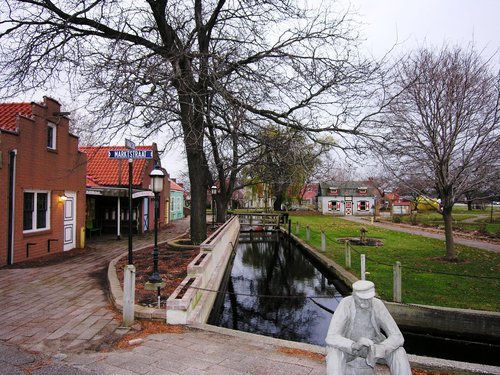Er zijn mensen, zeker ook buiten het Vlaams-Nederlandse gebied, die denken dat St. Juttemis niet bestaat. Misschien hebben ze gelijk. En er zijn mensen, voornamelijk binnen het Vlaams-Nederlandse gebied, die denken dat St. Juttemis van gisteren is. 17 augustus. Voor de laatste een hmmmm…:
Mogelijke oorsprong
De volledige uitdrukking is met sint-juttemis, als de kalveren op het ijs dansen. Jutte zou een koosvorm zijn van Judith, de bijbelse heldin, van wie de naamdag op 17 augustus zou vallen. (In werkelijkheid valt haar naamdag op 24 maart en 7 september.) In augustus ligt er uiteraard geen ijs, en kalveren kunnen niet dansen, vandaar de betekenis nooit. Deskundigen op het gebied van volkscultuur menen dat dit verhaal uit de lucht gegrepen is en wijzen erop dat noch de heilige Judit noch de heilige Jutta haar naamdag op 17 augustus heeft.Op 17 augustus wordt wel de naamdag van Guda, of Guida of Jutta, van Arnstein gevierd. Verder bestaat er een heilige Jutta van Sangerhausen (5 mei). Zij kwam uit een adellijke familie in Thüringen en overleed in 1260 op weg naar het Heilige Land. Hoe een lokale Duitse heilige terecht komt in een Nederlandse zegswijze is echter niet te verklaren.
Volgens een andere variant zou de naam een verbastering zijn van “jodenmis”; dat is dus nooit, want joden kennen geen mis.
De uitdrukking wordt in 1577 voor het eerst vermeld in de Kroniek van Roermond. De uitdrukking komt ook voor in de Dictionaire français-hollandais uit 1738 door Pieter Marin.
Varianten
Er is nog een andere niet-bestaande dag (die echter wat in de vergetelheid is geraakt): Sinternuit. Uit te spreken als : “Sinter-Noe-wit” of “Sinter-Noe-wèt” en betekent eigenlijk Sinter-nooit. Het Schip van Sinternuit komt zo aan zijn naam.
Als de klaver uit ‘t veld is
Te Pruimpaschen, als de kalveren op ‘t ijs dansen (Limburg)
Als de catte ganzen eyer leggen (F.A. Stoett)
Als daer twee sondagen in een week comen (ook F.A. Stoett)
Als de kiekens tanden krijgen (Vlaanderen)
Als de paus een geus wordt
Als Pasen en Pinksteren op één dag vallen is eveneens een uitdrukking voor nooit.Spelling
Het woord sint-juttemis wordt met een streepje en kleine letters geschreven, omdat niet (meer) wordt verwezen naar een bestaande heilige. Het Groene Boekje kent het als sint-jutmis en sint-juttemis.In andere talen
Bulgaars: На куково лято (Na koekowo ljato), in de zomer van een/de koekoek, verwijzend naar het verhaal dat de koekoek in de zomer verandert in een havik of sperwer, wat betekent dat er ‘s zomers geen koekoeken zijn
Engels: Saint Glinglin, een denkbeeldige Franse heilige
Frans: Saint Glinglin of Cela arrivera si le Carême dure sept ans (Dit zal gebeuren als de vasten 7 jaar duurt) of la Semaine des trois Jeudis (de week van 3 donderdagen).
Latijn: ad Kalendas Graecas, toegeschreven aan Suetonius, naar de Griekse kalendae, maar de Kalendae duidde een dag in de Romeinse kalender aan, niet de Griekse
Luxemburgs: Päifenneijoerschdag (päifen = fluiten, neijoerschdag = nieuwjaarsdag, nadere verklaring onbekend)
Roemeens: Sfântul Aşteaptă (“Sint Wacht”)In de volgende talen wordt verwezen naar “Sint Nooit”:
Duits: Sankt Nimmerlein
Portugees: São Nunca
Esperanto: Sankta Neniamo
Pools: Na świętego nigdy of Na Święty Nigdy
[Wikipedia, ja.]
Now you know… En uiteraard deze:
 [Dé Du dok, H’sum ja]
[Dé Du dok, H’sum ja]








